Day 23 – Thursday, August 28, 2025
It was a wonderful, crisp morning – and I was looking forward to the day ahead.
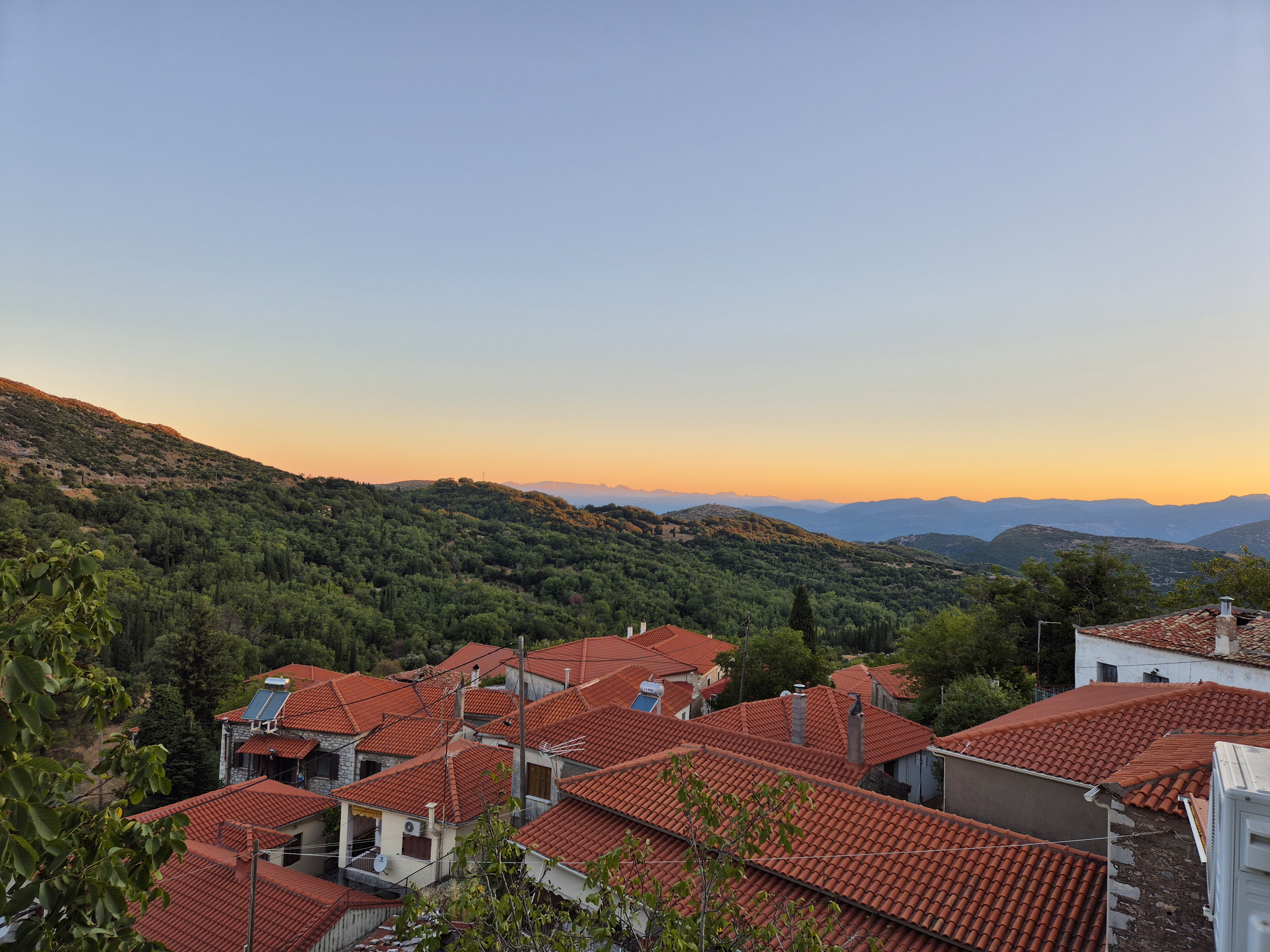 Red rooftops and mountains everywhere
Red rooftops and mountains everywhere
This village, being so remote, had yet another feature: a public library, founded in 1840 by the humanist Agathofron Nikolopoulos, whose family was born there. Its collection comprises rare 16th- and 17th-century manuscripts, in Greek and in foreign languages, important documents from the period of the Greek War of Independence, and rich folklore material. Today, the library has more than 40,000 volumes. A lady, who was on a job rotation and is otherwise an elementary school teacher in the village, gave a nice private guided tour of the library. Alas, I was not allowed to take pictures of the individual books – but it was really impressive.
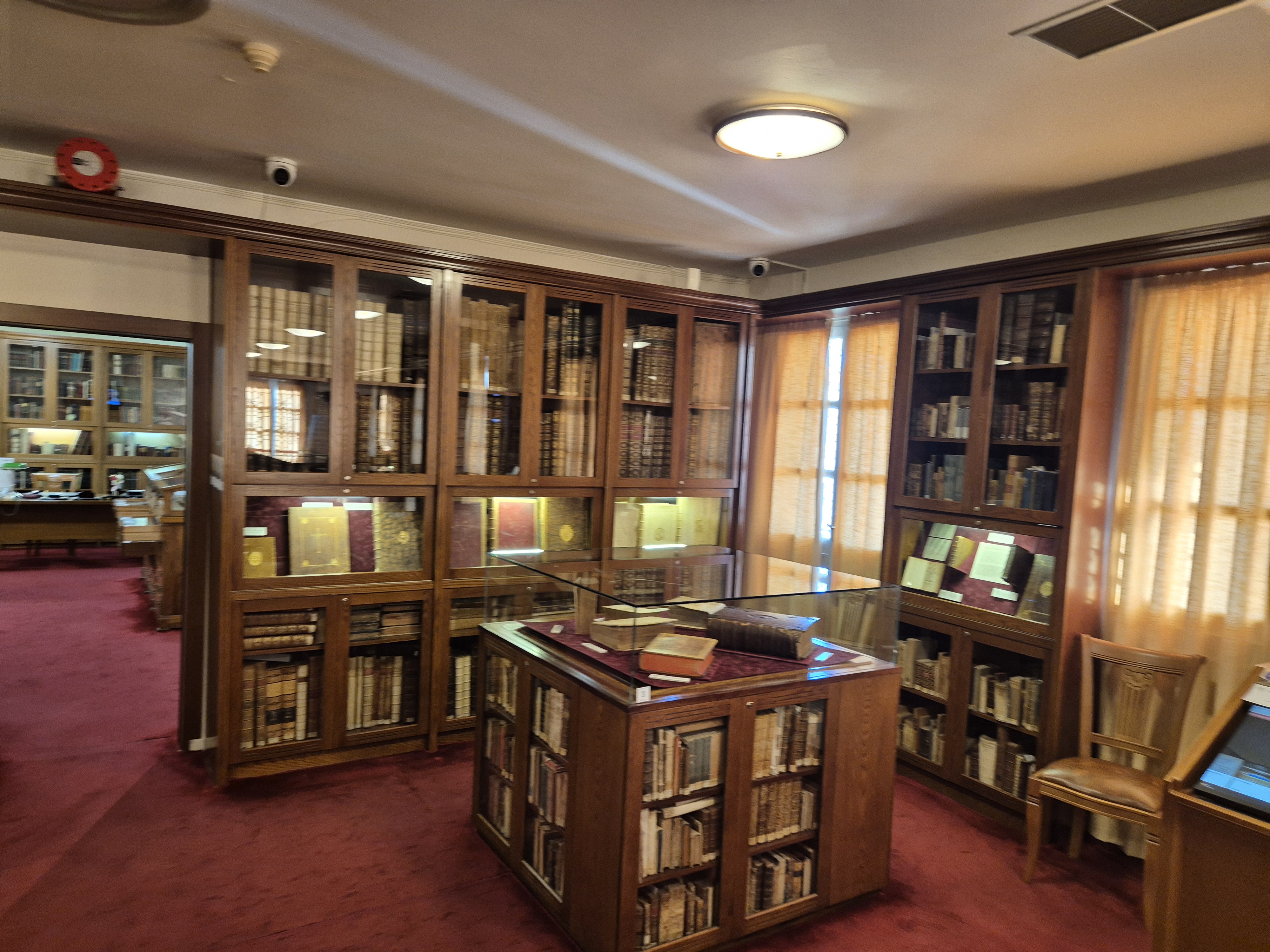 Private tour of the public library
Private tour of the public library
I did some groceries and left town around 10 am – now there were 14 kilometers of uphill riding to the Temple of Apollo. Again, many switchbacks came – I had the chance to say good-bye to the village.
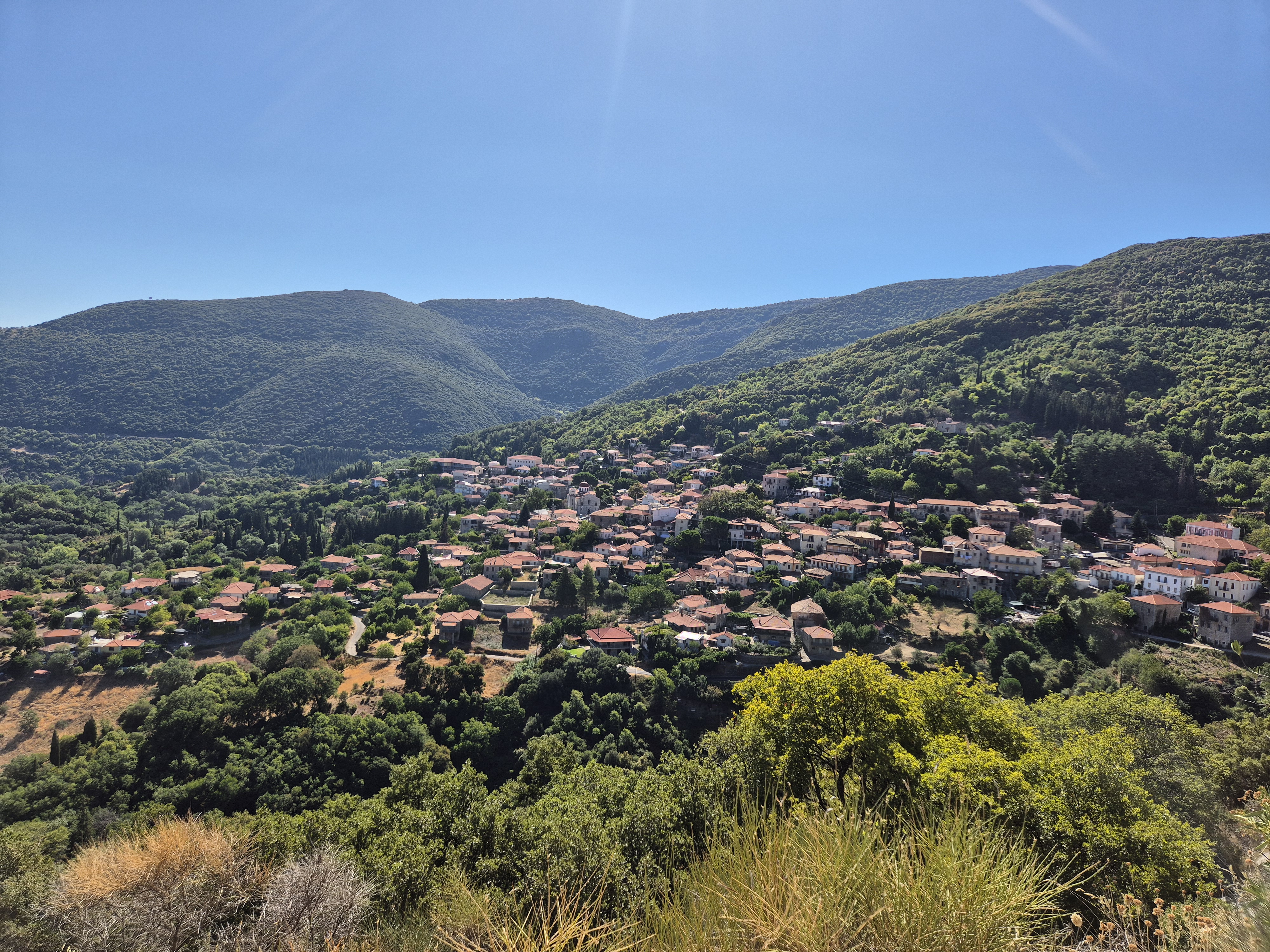 Good-bye, Andritsaina!
Good-bye, Andritsaina!
In this pretty deserted landscape, suddenly, two bikers came my way. They were on e-bikes and without luggage – as it turned out, they were originally from Leipzig in Germany but had moved permanently to a nearby village and had been living there for a year, getting rid of all their belongings in their original homeland. I told them that I wanted to bike to the end of the Peloponnese peninsula in the next three days. They told me it would not be possible; I would need about a week. Hmmm. The guy was carrying a long stick on his luggage rack – he explained he used it to scare dogs. By now, I had no fear of dogs, but I still had one thing: respect.
Soon after they left, I came across a huge herd of goats standing in the middle of the road. I stopped at a considerable distance for two reasons – to take a video of them and also because I was not sure how their “boss,” a vicious-looking dog, would react to me getting closer.
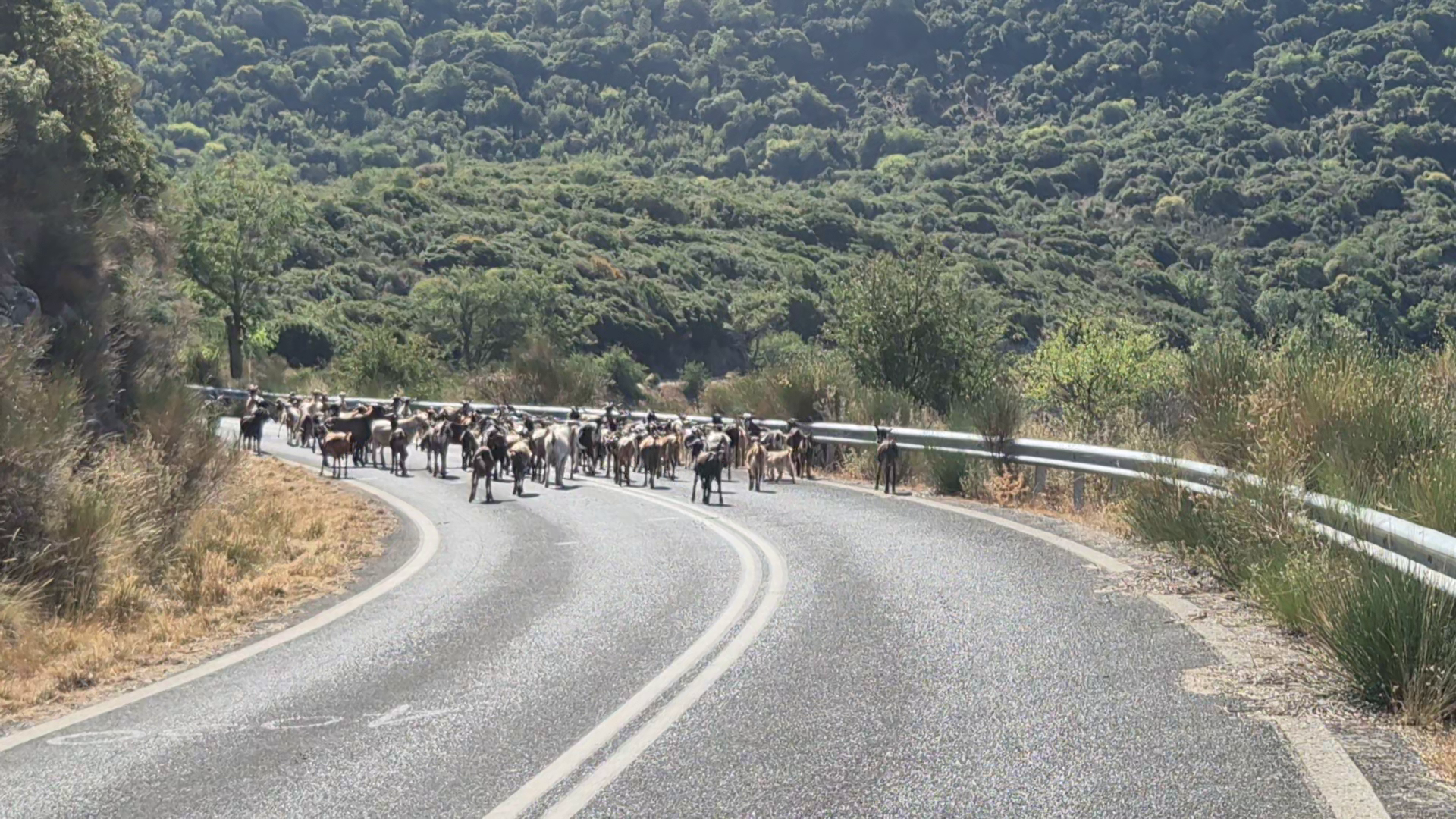 A close encounter of the third kind
A close encounter of the third kind
The situation did not escalate, as a car came from behind, causing all the goats to jump to the side. By the time I reached them, only a few goats had been separated from the herd – running around in panic, loudly bleating. Their caretaker dog pulled its tail between its legs – no reason for me to be afraid there.
The road ascended further, forked in various directions, and it was just 4 more kilometers to the temple, half of it downhill, the last two kilometers climbing again.
When I finally reached the temple, it was not the most impressive sight up close, as it has been covered – for a couple of decades, since 1987 – in a white tent to protect the ruins from acid rain and other forces of nature. It is at an elevation of 1,131 meters and was built sometime between 450 BC and 400 BC. A notable fact is that the temple is aligned north–south, in contrast to the majority of Greek temples which are aligned east–west; this was necessitated by the limited space on the steep slopes of the mountain.
Up until the early 19th century, the inside of the temple was decorated with a continuous Ionic frieze showing Athenians in battle. British “archaeologists” (more precisely: thieves) removed these marble slabs in 1815 – today they are displayed in the British Museum. They later sent back a copy to Greece, how very nice.
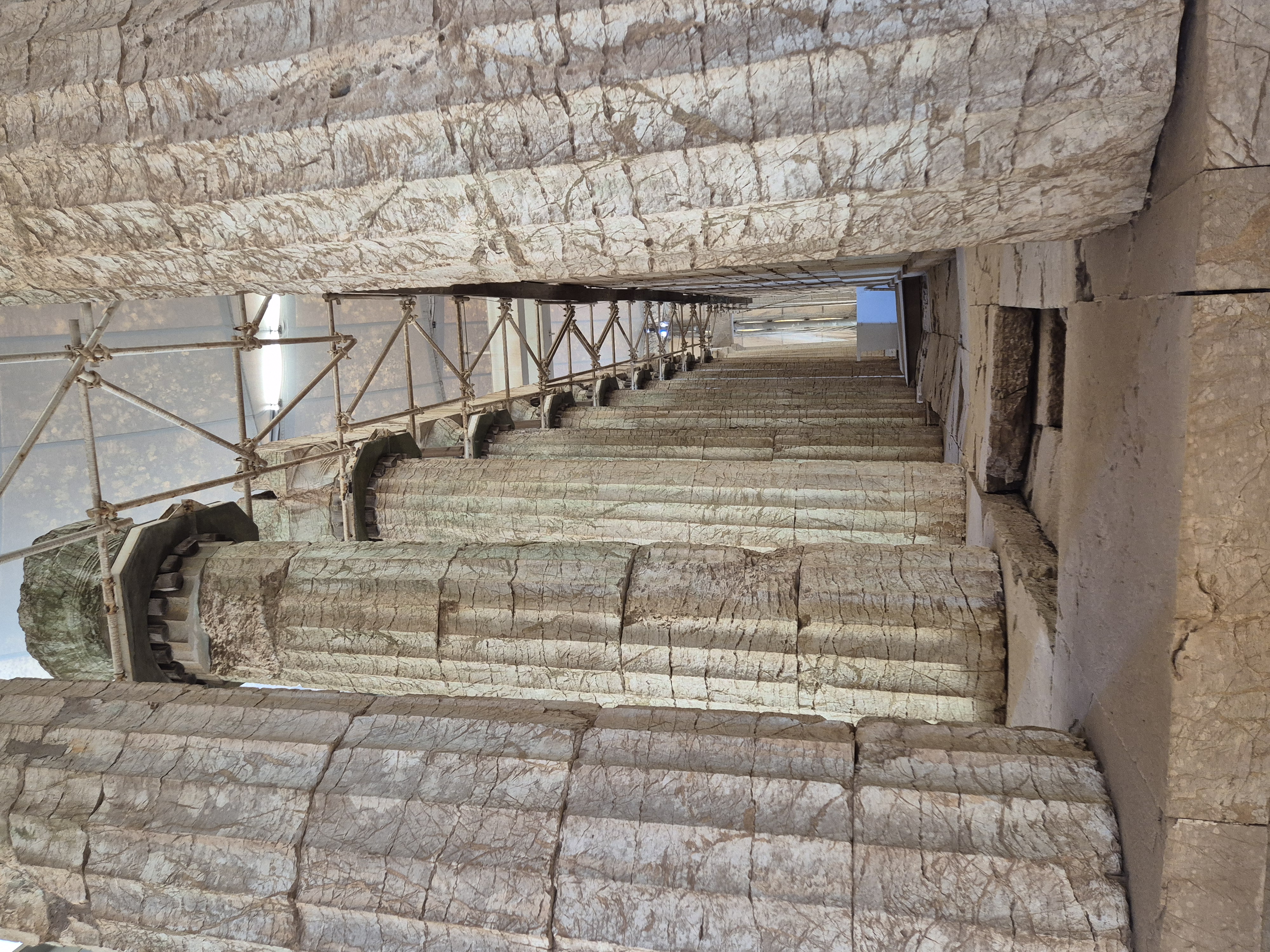 The magic was somewhat destroyed by the tent...
The magic was somewhat destroyed by the tent...
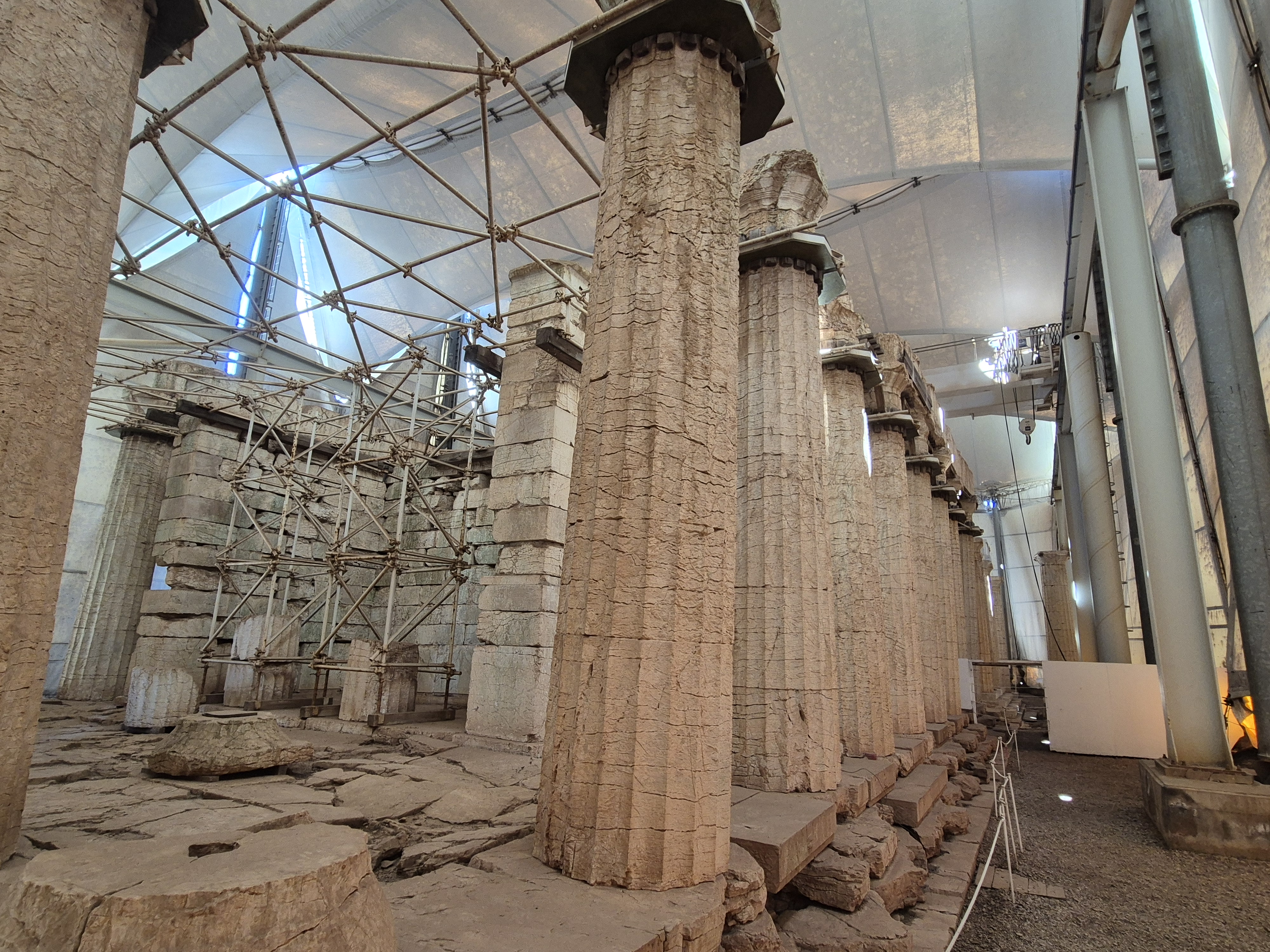 ...having said that, it is still uncanny how this structure was constructed some 2,500 years ago...
...having said that, it is still uncanny how this structure was constructed some 2,500 years ago...
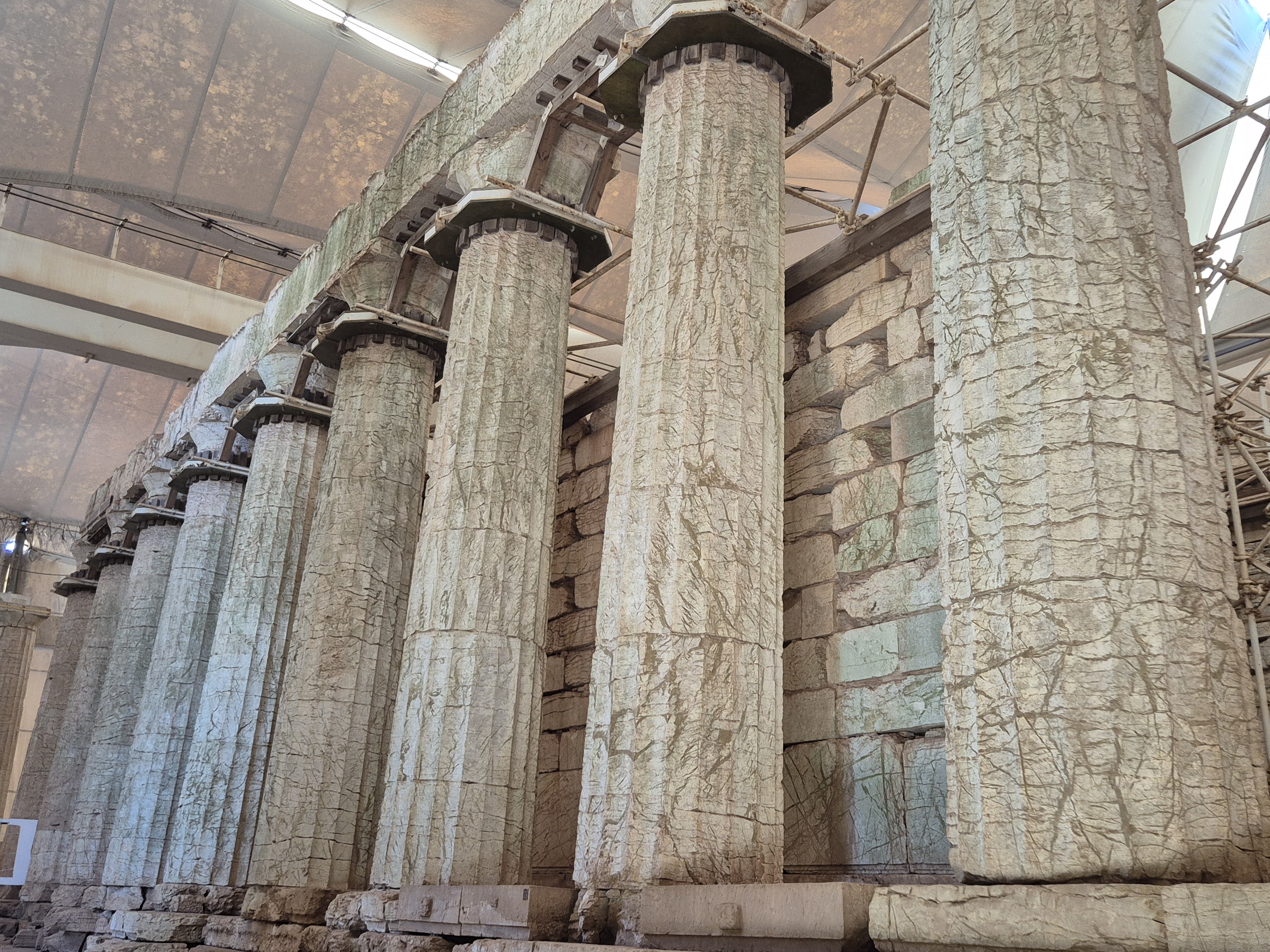 ...without modern machinery, at this height...
...without modern machinery, at this height...
I left, a tad disappointed (even the lady selling tickets thought the price of €10 was a bit high), but I was not yet done with the temple, as you shall see. I asked the lady for the best route to the south of the Peloponnese peninsula – she told me to avoid the road I had intended to take at all costs, as it was crazy curvy. Her suggestion was to ride westward to the coast, then follow it southeast – quite a big detour.
Well, I did not listen. I backtracked 4 kilometers to the junction, then, instead of following her indicated road, I decided to drop down to a small village shown on my map, called Skliros, and take a tiny road from there south. This remote village had a sizable church. I met two older gentlemen sitting on their porch and said hello.
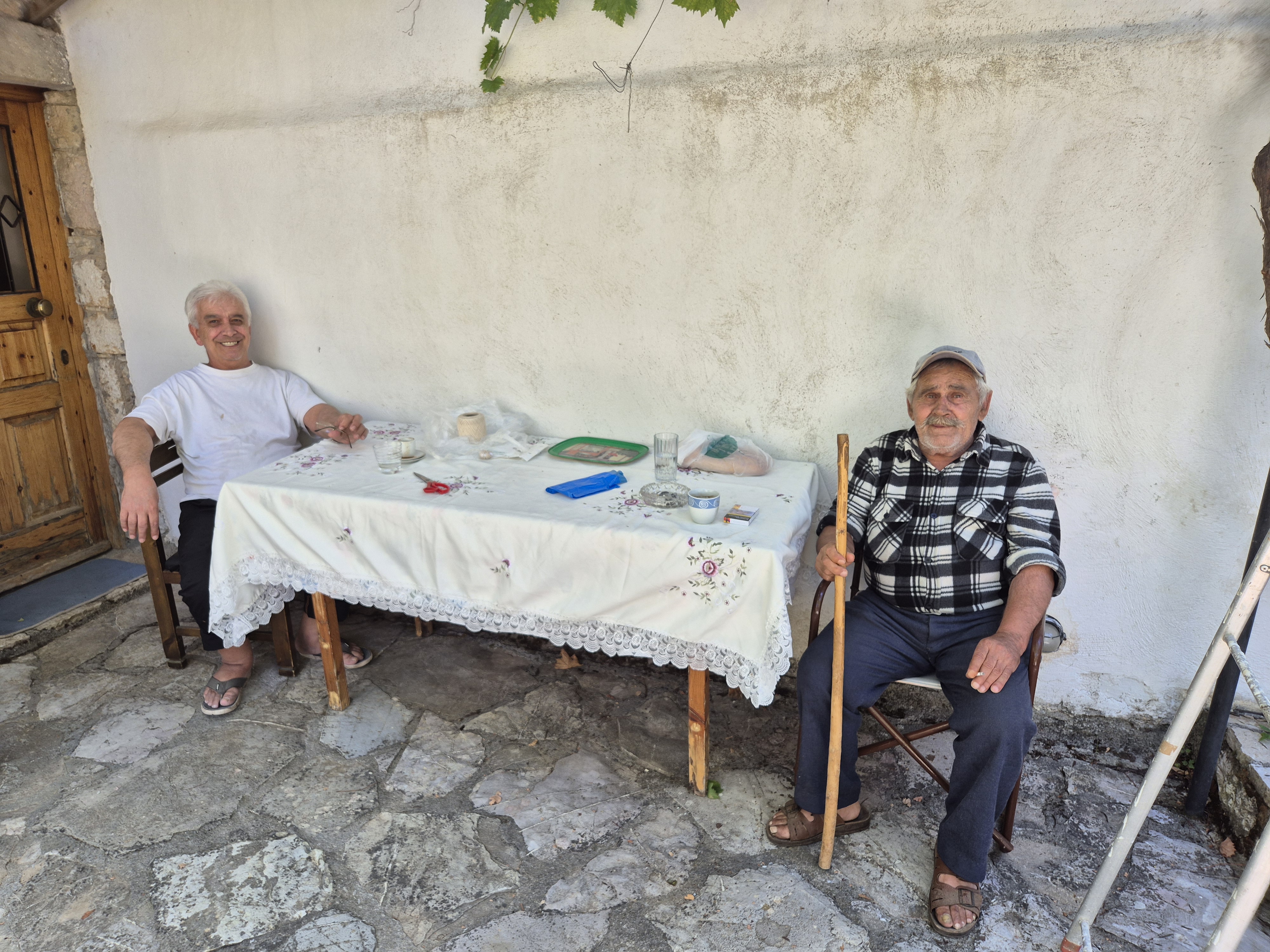 Was surprised to see such a big church in a tiny village
Was surprised to see such a big church in a tiny village
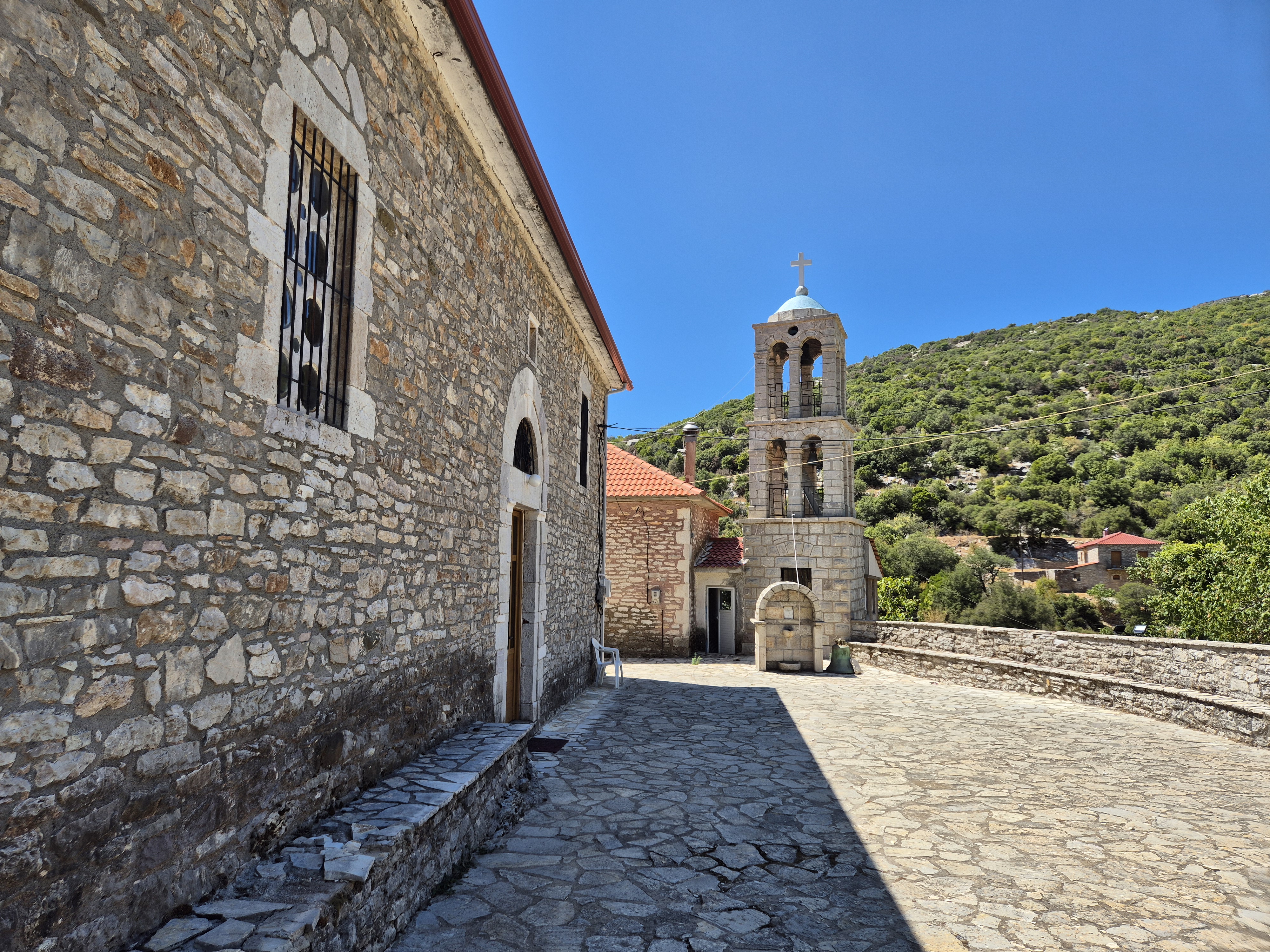 I came to say hello...
I came to say hello...
Within the village, I was a bit confused which road to take – all of them dirt roads lacking signs – but Google Maps did a relatively good job guiding me. Worse, as the village was in a deep valley, there was no other option than to climb uphill. At times, it was so steep on a bad surface that I had to get off my bike to push it – moreover, I was not sure whether the road would continue to the next village. Then, something unexpected happened – a passenger car driven by a smiling lady came slowly toward me (herself very slow due to the poor road) and confirmed I was going in the right direction. She even told me of a highlight: a bridge over a river with a perfect spot for swimming.
From this small road – and then later on, from other roads – my appreciation of the Temple of Apollo Epicurius started growing. Even after riding for many hours past the temple, I could still see the white tent. Homage to the architects, who 2,500 years ago picked a spot on a mountain at 1,131 meters to build a temple visible for dozens of miles. I often bid a mental farewell to the temple, thinking I would not see it again, but it kept coming back into view. Really impressive.
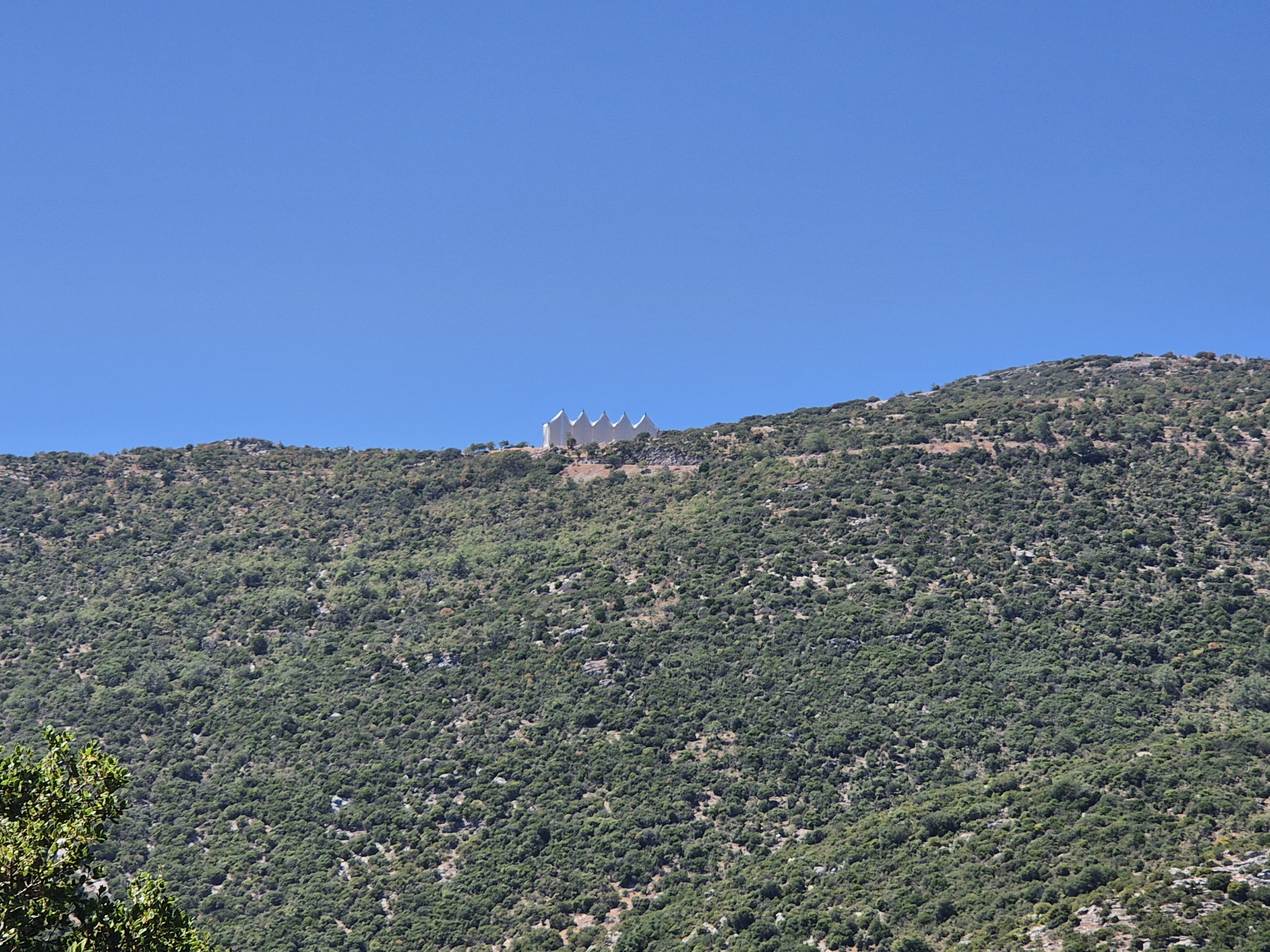 Apollo about 6 km of riding away
Apollo about 6 km of riding away
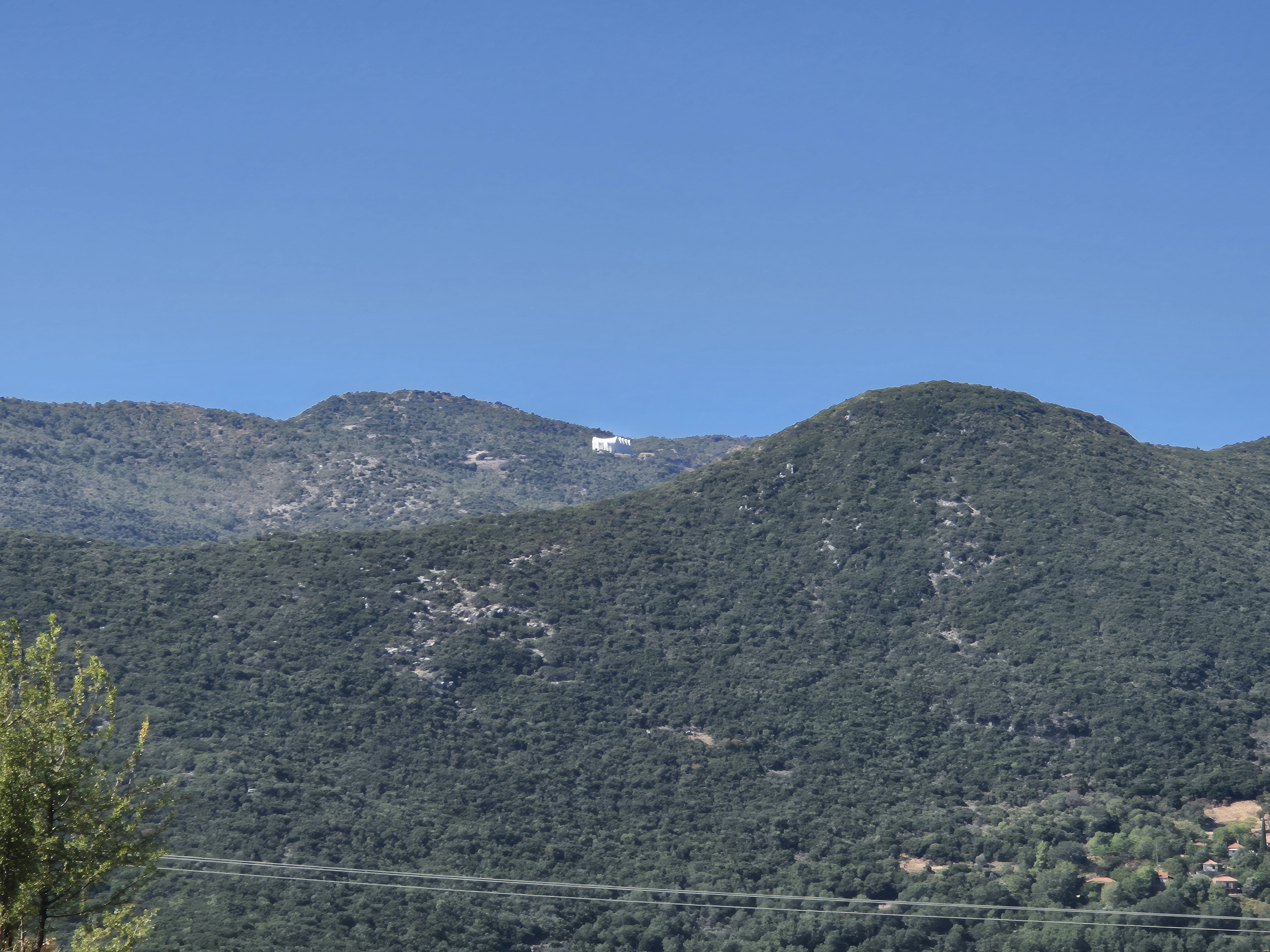 Apollo about 15 km of riding away
Apollo about 15 km of riding away
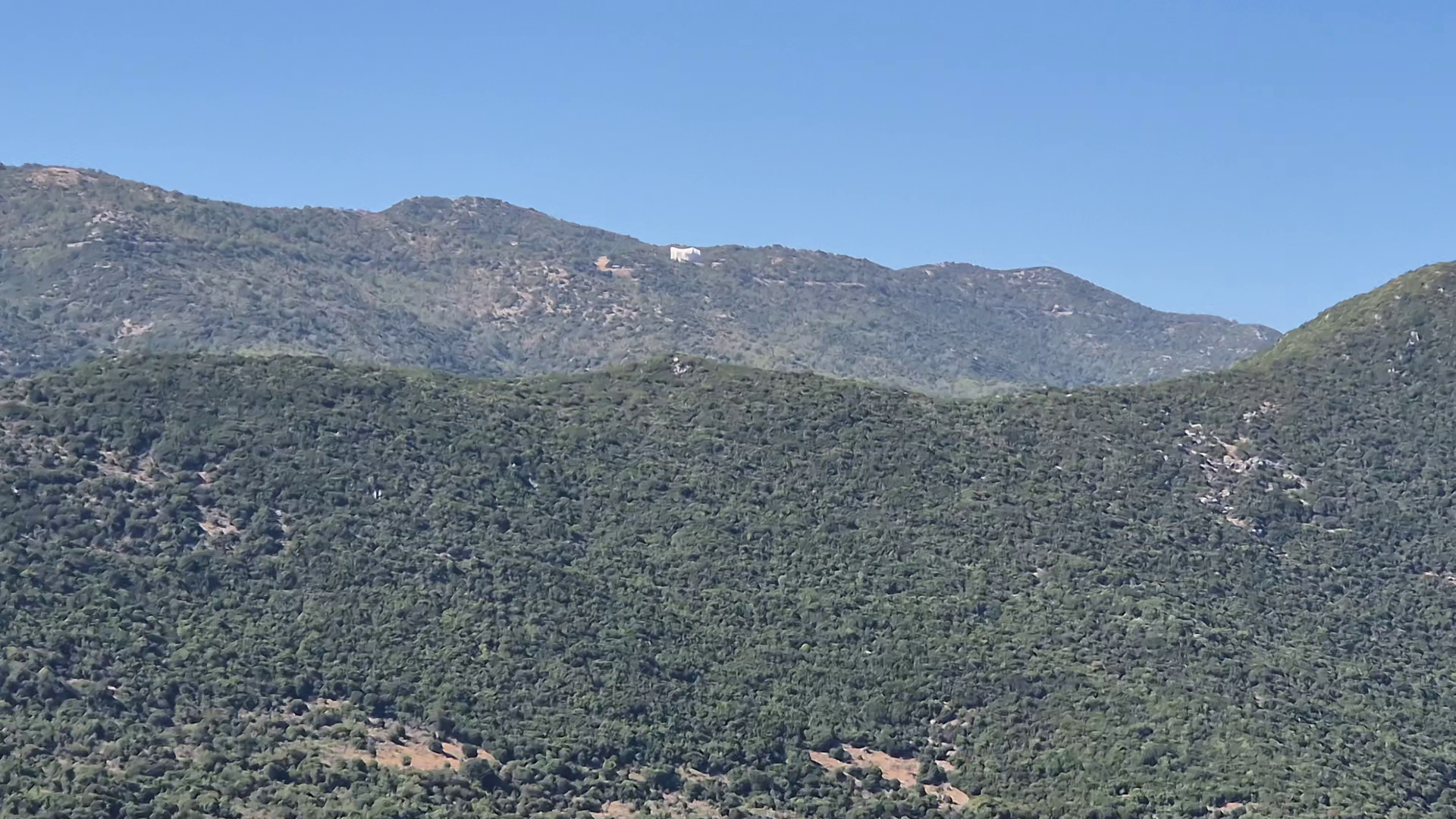 Apollo about 35 km of riding away
Apollo about 35 km of riding away
Anyhow, I was still on this small, remote dirt road creeping uphill from Skliros. I was glad to see the ascent coming to an end. The Greeks, being religious, had built a small chapel – even in the middle of nowhere, "behind the back of God," as we say in Hungarian. A few kilometers further down (or up?) the road, I came across another chapel.
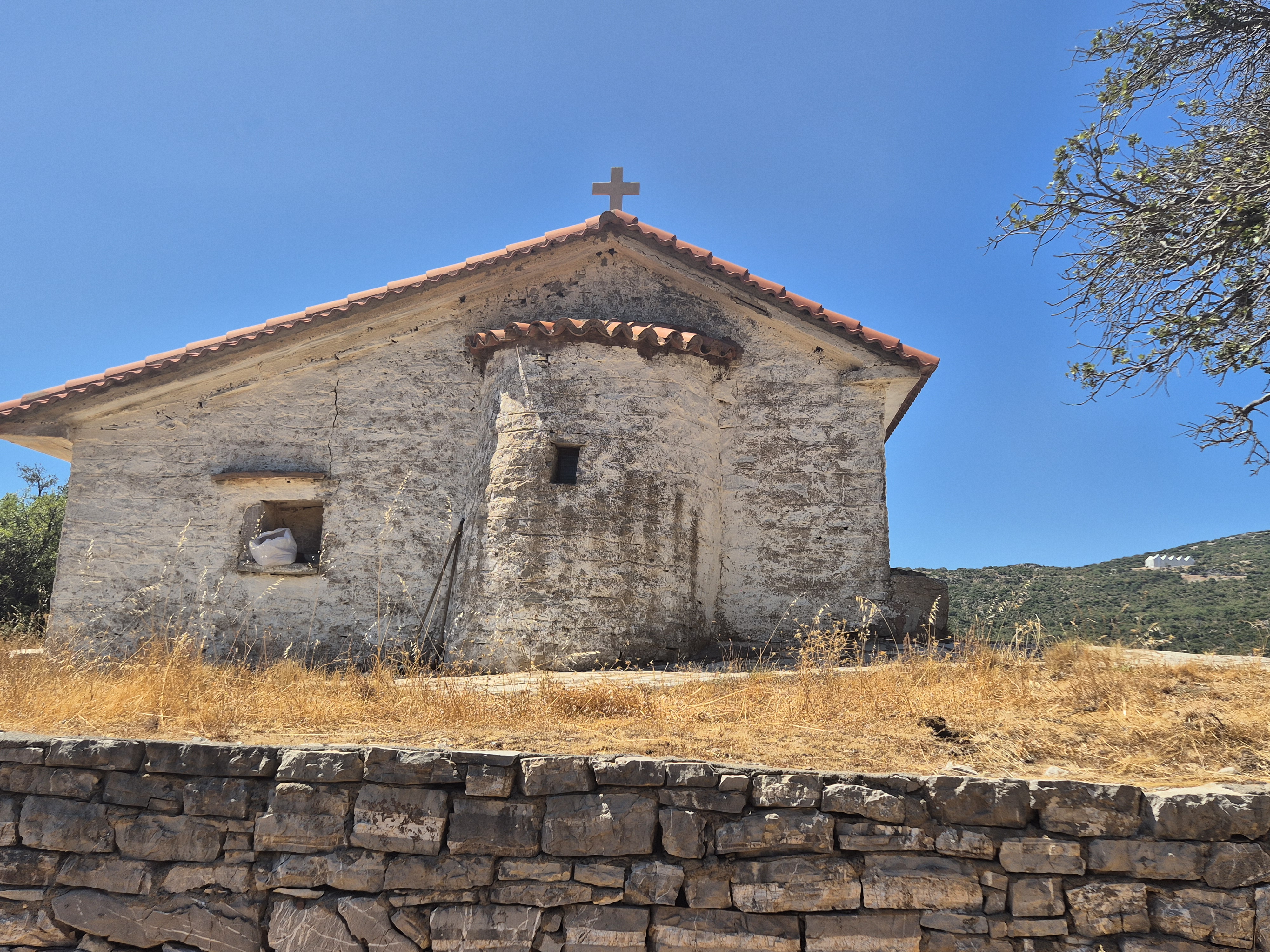 A small chapel built for whom exactly...? Not sure there was anyone in the vicinity
A small chapel built for whom exactly...? Not sure there was anyone in the vicinity
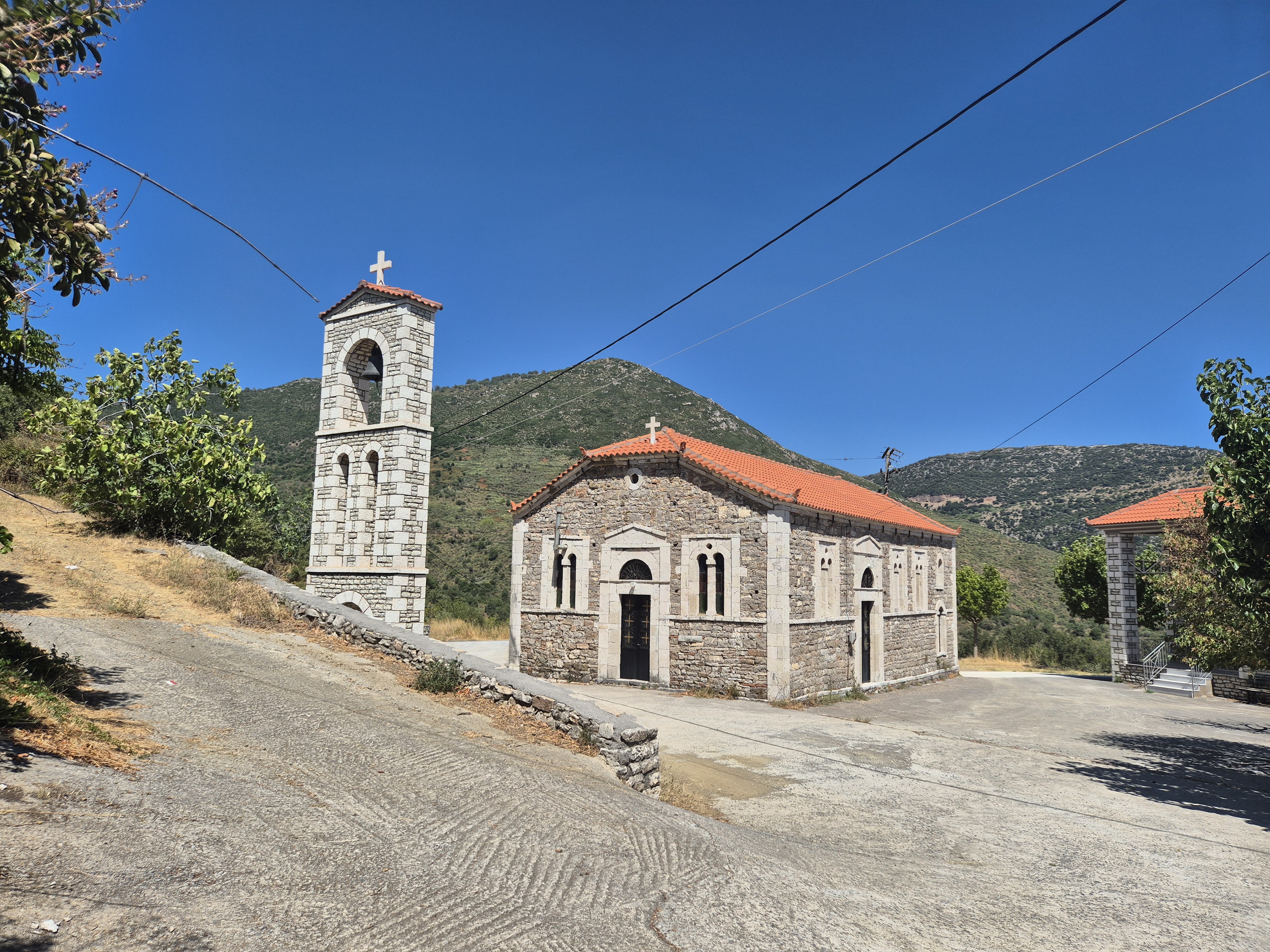 ...and one more small chapel built for whom?
...and one more small chapel built for whom?
I dropped into a valley and all I could see were small villages and more mountains, trusting the worst climbing was behind me.
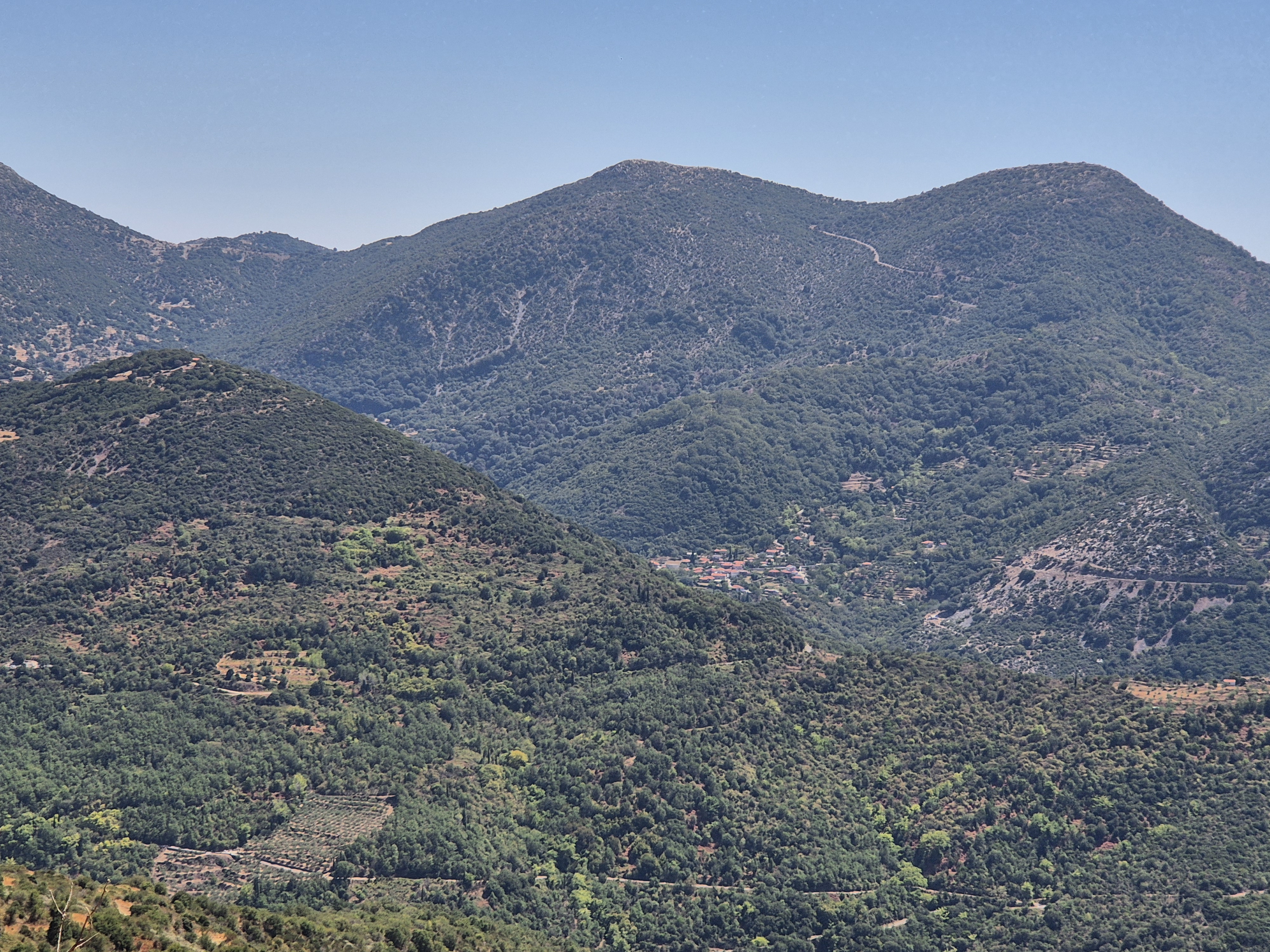 You can see the red roofs of the next village, quite far from me
You can see the red roofs of the next village, quite far from me
I whizzed through tiny villages, without seeing a single person. I did manage to startle a dog – seldom have I seen one running for its life! Later, as the lady had told me earlier, I reached a beautiful creek flowing down the mountain. I spotted the bridge and the great spot for swimming. So I stripped and immersed myself in the cool water – really refreshing!
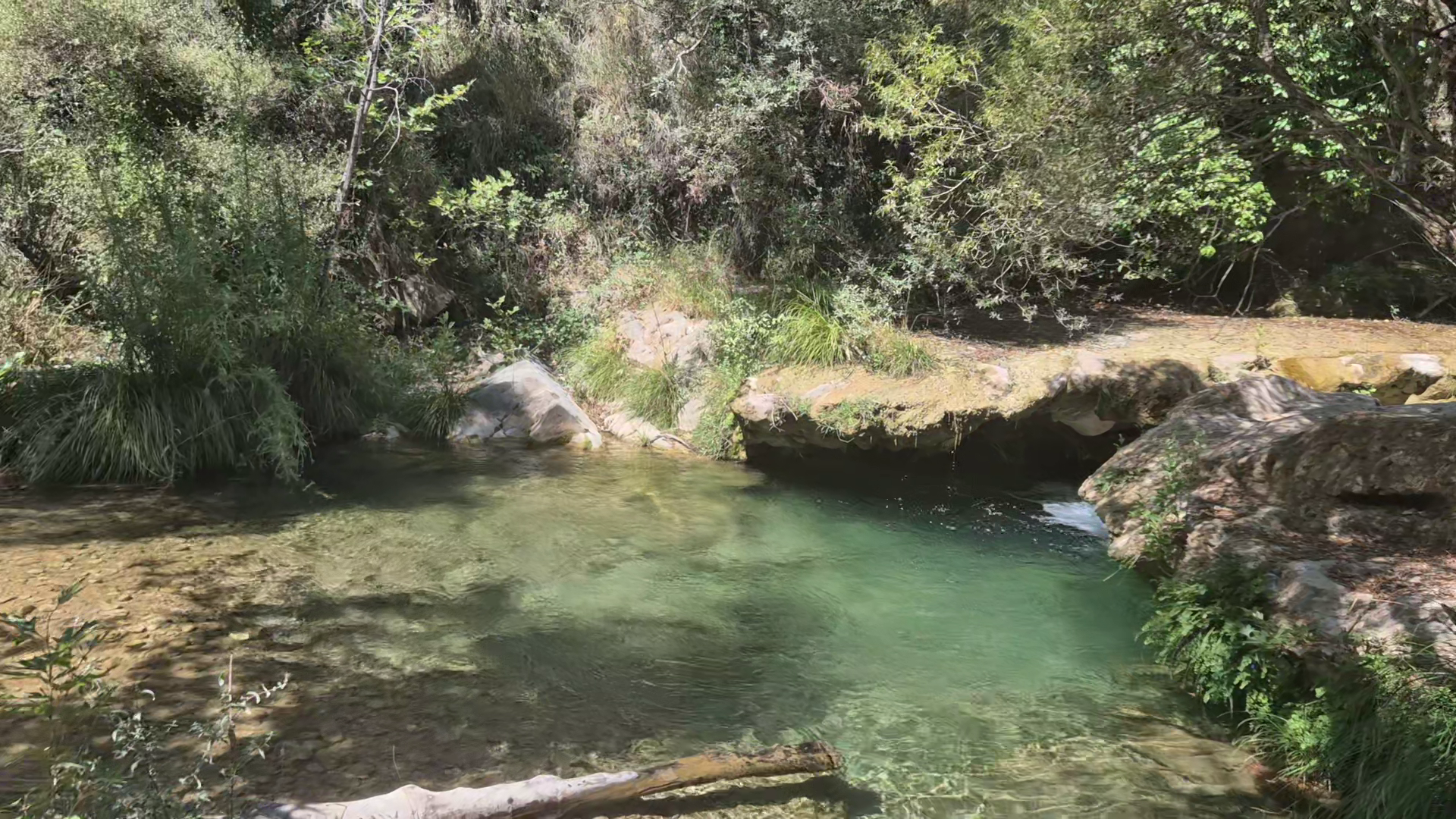 What a pleasant dip!
What a pleasant dip!
I guess if I had noticed what was awaiting me, I would not have enjoyed my swim so much – a huge climb, including a major switchback, awaited. The only positive: I could use the entire road to snake uphill; there was no traffic.
Finally, I reached a main road – and guess what I saw there – yes, more climbing. Here the positive thing was that the Temple of Apollo came into view again – something I had not expected.
Suddenly, my phone started ringing and vibrating loudly. I thought it might be a warning that it overheated. No, this was some kind of civil alarm, but the text was in Greek. I believe it was a wildfire warning; I did find some news items mentioning this in my area – but I did not come across any notable danger.
As mentioned before, I firmly believe that all climbs come to an end (prove me wrong if you can) – and a wonderful view came into sight. A mountain, looking a bit like Badacsony at Lake Balaton, probably an extinct volcano, plus a nice long downhill with lots of switchbacks – yippie! And, to make it even better, that big blue in the background meant I had – almost – crossed the Peloponnese peninsula! The emphasis was on “almost.” Yes, the descent was amazing, but it sadly did not last till the coast – to get there, many more ascents awaited.
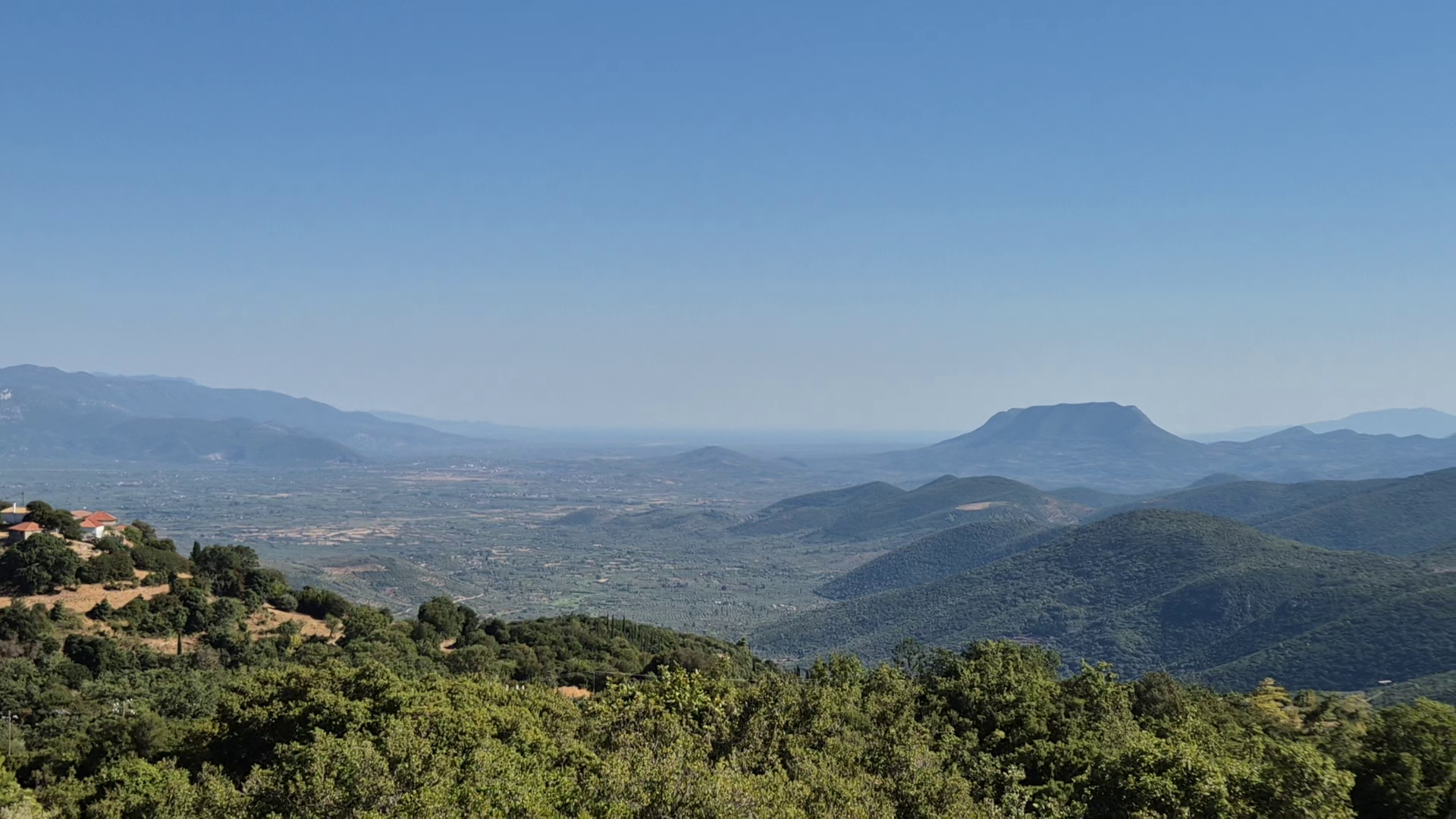 A mountain like Badacsony, with the blue of the sea next to it – close to crossing the Peloponnese peninsula!
A mountain like Badacsony, with the blue of the sea next to it – close to crossing the Peloponnese peninsula!
There was a funny scene – at an intersection, where I was trying to figure out the best way to continue (it was simply straight), a Greek driver asked me for guidance in Greek. I told him I was a tourist and had no idea. Seeing that he was older and probably not using Google Maps, I asked in English where he was going and was able to point out the correct road. He thanked me a lot and asked where I was from. I replied Austria (sometimes Hungary). Oh, Vienna, what a great city! He had been there two years ago and visited Grinzing each night. I had to smile.
Anyhow, I decided to make it to the coast, to the town of Kalamata. I saw there was a campground and gave them a call. Eventually, they replied, telling me I could come but must be there by 9 pm. It was a bit after 8 and about 15 kilometers remained – nothing too bad, plus now that I was nearing the coast, it was a bit downhill.
I got to the center of Kalamata and, while I was not hungry, I bought some orange cake and ice cream to go. The campground was on the long shore, a road separating the beach from camping. I did not feel jealous of the people swimming there – compared to the beaches I had visited on the western shore, the shallow bay did not appeal to me.
It was twenty to nine when I reached the campground and was shown a spot between two other campers. There was a washing machine, so I took advantage of it and cleaned myself in the bathroom while the clothes happily rotated in the machine.
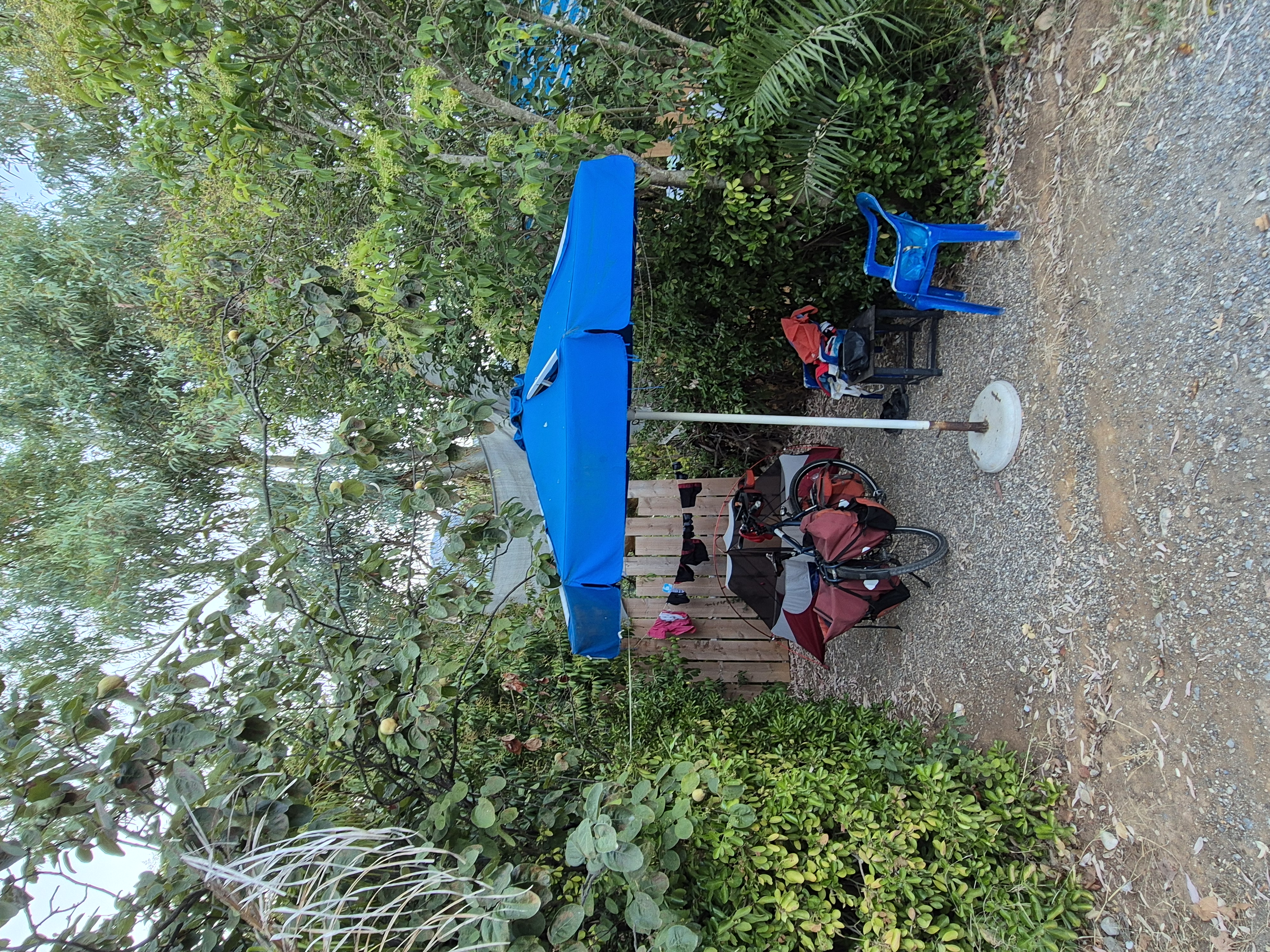 Campground at Kalamata
Campground at Kalamata
It was quite late by the time I laid down – and this turned out to be one of my worst nights. The neighbor on one side snored the entire night, and in the wee hours, I heard someone pee in the bushes next to my tent – even though there was a toilet just 10 meters away. Not too nice.
The ride was 91 km long, with 1,287 meters of ascent.